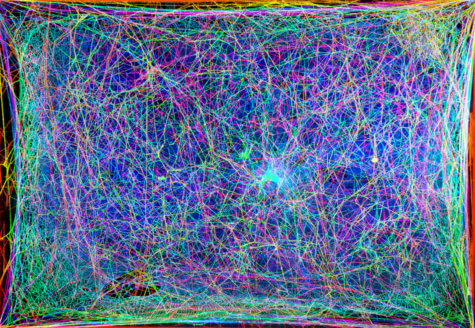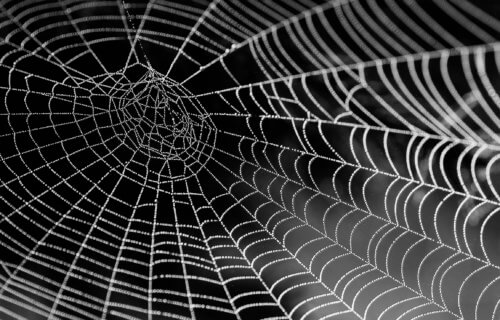WASHINGTON — Spiders are master builders and many consider their webs to be true pieces of art. Researchers from the Massachusetts Institute of Technology (MIT) however, think there’s more to these intricate 3D masterpieces. Hoping to gain a better understanding of the spider’s world, scientists have translated spider webs into music. Learning how these creatures interpret the “good vibrations” may actually allow humans to communicate with spiders.
“The spider lives in an environment of vibrating strings,” says principal investigator Markus Buehler, Ph.D., in a media release. “They don’t see very well, so they sense their world through vibrations, which have different frequencies.”
Study authors explain that these vibrations in the spider’s world come from many places; from the spider stretching a silk strand to the wind or an insect moving its web.
Uncovering the music hidden in nature

(Credit: Isabelle Su and Markus Buehler)
Buehler, who has a passion for music, examined the possibility of extracting rhythms and melodies from non-human sources in nature — like a spider’s web. Just like strumming a guitar produces a vibration in the strings, could a web also produce a musical pattern?
“Webs could be a new source for musical inspiration that is very different from the usual human experience,” Buehler explains.
By turning a web into an audio sensation, researchers hoped to uncover new insights into the 3D architecture and creation of webs. To do this, the team scanned a real spider web with lasers to get a 2D cross-section. They then used a computer algorithm to reconstruct the web’s 3D nature from the real world.
With the framework in place, the team assigned different frequencies of sound to each strand. They combined these “notes” into patterns based on the web’s 3D structure to create a unique melody. Using a harp-like instrument, study authors were able to play the spider web music at several live performances worldwide.
Stepping into the spider’s world
Scientists didn’t just turn the spider’s home into music, they also created a way to virtually “enter” the arachnid’s domain. The MIT team developed a virtual reality simulation which allows users to visually (and audibly) move along their web.
“The virtual reality environment is really intriguing because your ears are going to pick up structural features that you might see but not immediately recognize,” Buehler says. “By hearing it and seeing it at the same time, you can really start to understand the environment the spider lives in.”
To learn more about how every spider spins these structures, researchers also scanned a web while a spider was constructing it. Their research allowed them to even add musical translations to each stage of the spider’s work.
“The sounds our harp-like instrument makes change during the process, reflecting the way the spider builds the web,” Buehler adds. “So, we can explore the temporal sequence of how the web is being constructed in audible form.”
Learning to speak the spider’s language
Study authors believe this step-by-step knowledge of how spiders build a web could help human technology work better. For example, “spider-mimicking” 3D printers may be able to create complex microelectronics in the future.
“The spider’s way of ‘printing’ the web is remarkable because no support material is used, as is often needed in current 3D printing methods,” the MIT investigator notes.
Researchers believe their study may even reveal how humans can learn to communicate with this species. The team recorded web vibrations while the spiders performed various activities, like building webs, communicating with each other, and sending courtship signals. Although they may sound the same to the human ear, scientists say machine learning algorithms successfully distinguished the different patterns. Essentially, computers can decipher the language of the spider.
“Now we’re trying to generate synthetic signals to basically speak the language of the spider,” Buehler concludes. “If we expose them to certain patterns of rhythms or vibrations, can we affect what they do, and can we begin to communicate with them? Those are really exciting ideas.”
The researchers presented their work at the spring meeting of the American Chemical Society on April 12.
https://youtu.be/UBDm_B8cMs8
